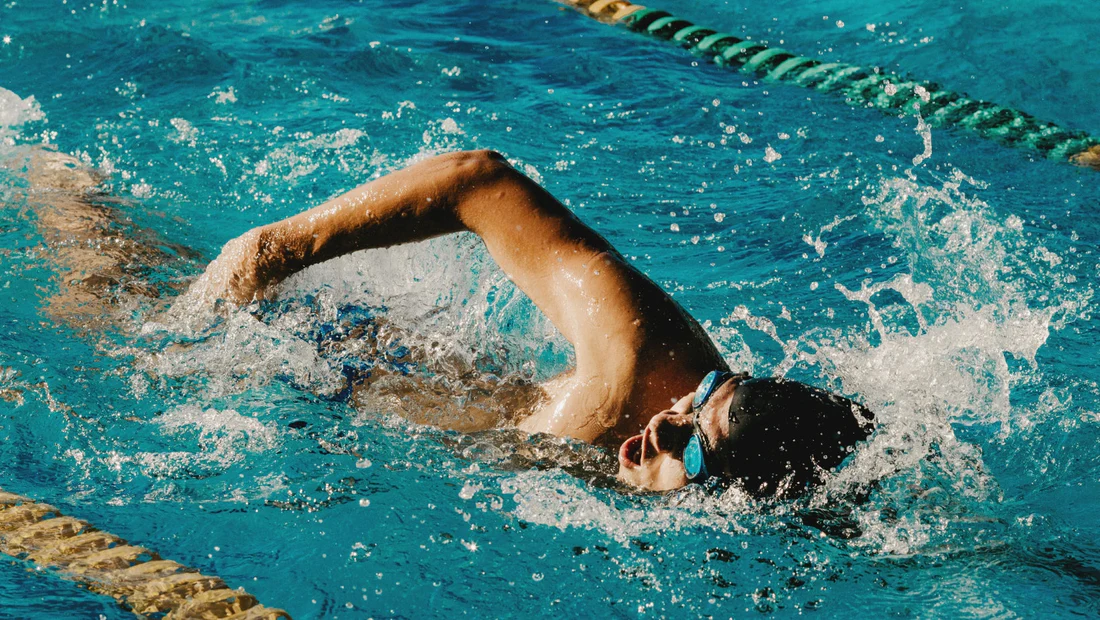
Looking for a workout that’s gentle on your body, highly effective, and incredibly fun? Swimming checks all the boxes. Whether you’re gliding through laps at the local pool or taking a leisurely swim in open water, this full-body workout offers profound health benefits for people of all ages and fitness levels. From building physical strength to boosting mental well-being, swimming is more than just a way to cool off—it’s a gateway to whole-body wellness.
The Physical Benefits of Swimming
Swimming is a fantastic form of exercise because it works your entire body while still being low-impact. Here’s why it’s a go-to workout for improving physical health:
Builds Cardiovascular Health
Swimming gets your heart pumping, making it an excellent aerobic exercise that improves cardiovascular endurance. According to the CDC, just two and a half hours of aerobic physical activity like swimming each week can lower your risk of chronic illnesses, such as heart disease and type 2 diabetes. With each stroke, the water resistance challenges your heart and lungs to work harder, boosting your overall stamina.
Strengthens Muscles
Unlike land-based exercises, swimming engages nearly all of your muscle groups simultaneously. The resistance of water forces your body to work harder, toning muscles in your arms, legs, back, and core. Over time, this leads to improved muscle strength and definition without the need for heavy weights. Better yet, swimming is suitable for both beginners and advanced athletes—just adjust the intensity of your workout.
Supports Weight Management
If you’re on a mission to shed a few pounds or maintain a healthy weight, swimming might be your new best friend. One hour of moderate swimming can burn around 400-500 calories, depending on your body weight and effort level. This makes it a highly effective calorie-burning exercise that feels less strenuous than running or weightlifting due to its buoyancy.
Enhances Flexibility
Every stroke you make in the water involves a full range of motion, stretching your muscles as they contract. Movements like freestyle or backstroke engage the shoulders, back, and hips, improving flexibility and joint health while reducing stiffness. Over time, regular swimming can lead to better posture and alignment, which benefits your body both in and out of the water.
Mental Health and Well-being
Swimming doesn’t just strengthen the body; it also works wonders for the mind. Here’s how spending time in the pool can boost your mental health:
Reduces Stress
Being submerged in water has a calming effect on the nervous system. The rhythmic breathing and repetitive motion of swimming mimic meditation, helping to ease stress and tension. Whether you’re gliding through a lake or floating in your backyard pool, the water serves as a tranquil escape from the daily grind.
Improves Mood
Researchers have found that swimming can increase the production of feel-good chemicals like endorphins and serotonin, improving mood and reducing symptoms of anxiety and depression. Group swimming sessions can also add a social element, contributing to a sense of connection and community.
Enhances Sleep Quality
If you’re tossing and turning at night, swimming may be your solution. Studies have shown that regular exercise, including swimming, can improve sleep quality and help combat insomnia. The physical exertion paired with the soothing properties of water leads to deeper, more restorative sleep.
Swimming Techniques and Safety
Before you cannonball into this exercise, it’s important to brush up on swimming techniques and prioritize safety.
Popular Swimming Styles
There are several swimming strokes to choose from, each offering unique health benefits:
- Freestyle: The most popular and efficient stroke, perfect for improving endurance and speed.
- Breaststroke: A slower stroke that focuses on building lower body strength.
- Backstroke: Great for posture and works the shoulders and back muscles.
- Butterfly: The most advanced stroke, ideal for building overall strength and power.
If you’re just starting, begin with freestyle or breaststroke for an easier entry point.
Tips for Beginners
- Start small with a couple of laps, gradually increasing your distance.
- Use proper swimming gear, including goggles, a swim cap, and a well-fitting swimsuit.
- Focus on your breathing technique—inhale through your mouth above water and exhale through your nose underwater.
Stay Safe
Safety is key when swimming, especially in open water. Always ensure you’re swimming in designated areas with a lifeguard present. If you’re venturing into natural bodies of water, check for currents, tides, or weather changes. At home, having a pool is convenient, but make sure to consult professional pool builders, such as those in Utah, about safety barriers to prevent accidents.
Incorporating Swimming into Your Routine
The beauty of swimming is its flexibility as a workout. Whether you prefer a structured schedule or casual sessions, swimming can easily fit into your routine.
Local Pool or Gym
Many community pools and gyms offer lap swim times or aquatic fitness classes, making it easy to incorporate swimming into your exercise plan. Aim for at least two 30-minute sessions per week to experience the benefits.
Open Water Adventures
If you live near a beach, lake, or river, open-water swimming can add variety to your routine. Just remember that open water conditions require more advanced skills and precautionary measures.
Structured Swim Workouts
For those who crave variety, consider combining different strokes and interval training into your swims. For example:
- Warm up with 10 minutes of freestyle at a moderate pace.
- Main set: Alternate between 2 laps of freestyle and 1 lap of breaststroke for 15 minutes.
- Cool down with a gentle backstroke.
Team Up
Find a swimming buddy or join a swim club to keep you motivated. Exercising with others can make the activity more enjoyable and help you stay consistent.
Conclusion
Swimming isn’t just a summer pastime—it’s a powerful tool for improving your physical and mental health. From boosting cardiovascular fitness to reducing stress, the benefits of swimming make it a standout form of exercise. Plus, with options for all skill levels and accessible locations like public pools or even having a pool at home, there’s no reason not to get started.





